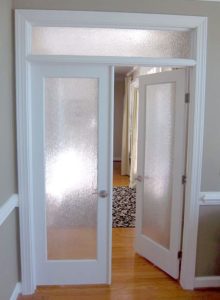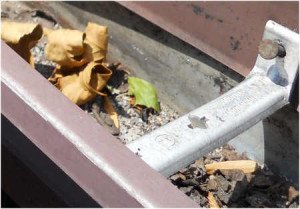 Many consumers hire carpenters or handymen to install french doors for them when they could actually do the work themselves. It is actually quite easy if you take your time, follow the steps outlined below and perhaps watch a few YouTube videos showing some of the visual details on how to install french doors into an existing doorway. This post assumes that you already have doors installed that you are replacing. The existing doors are used as a template and once you finished with them can be sold to recover some of your cost. New doors come in a variety of sizes, with primer paint already applied. Once they are installed you can apply a final coat of paint on them to finish them off.
Many consumers hire carpenters or handymen to install french doors for them when they could actually do the work themselves. It is actually quite easy if you take your time, follow the steps outlined below and perhaps watch a few YouTube videos showing some of the visual details on how to install french doors into an existing doorway. This post assumes that you already have doors installed that you are replacing. The existing doors are used as a template and once you finished with them can be sold to recover some of your cost. New doors come in a variety of sizes, with primer paint already applied. Once they are installed you can apply a final coat of paint on them to finish them off.
How to Install French Doors
You will need the following tools and materials.
- Shims
- Electric drill
- Philips drill attachement
- Drill bit to drill holes for door handles
- Chisel
- Rubber Mallet
- Pencil
- Square
- Table to place doors on to make your job easier
The detailed step by step process is as follows:
- Place shims under the existing door to hold it in place
- Remove door handle
- Place the new door on a table or some support structure
- Unscrew hinges on the existing door
- Remove the door and place it on top of the new door
- Make sure that you match the bottoms of both doors
- Line up the door to make sure that the old door is perfectly aligned with the new door.
- Use the square to mark the hinge cut-outs that you need to make
- Trace the hole you need to cut for the door handle
- Remove the old door and begin drilling out the door handle with an appropriate sized drill bit
- Stand the door on its side and chisel out the hinge locations using the rubber mallet and chisel
- Take your time to be careful not splitting the door
- Install the new door using the shims to support it at the correct height
- Attach the hinges and test to make sure that the door operates properly and closes properly
- The adjustment might be needed to ensure that it properly fits with the other door
- Install the new door hardware to ensure that it fits with the other door
Repeat the process to install the other door. Then paint the doors, once you are satisfied with the installation. Remove the door handles before painting. Use masking tape to cover the door hinges to avoid getting paint on them. Most doors come with one coat of door primer applied.
For more remodeling ideas that can save you money, click here
